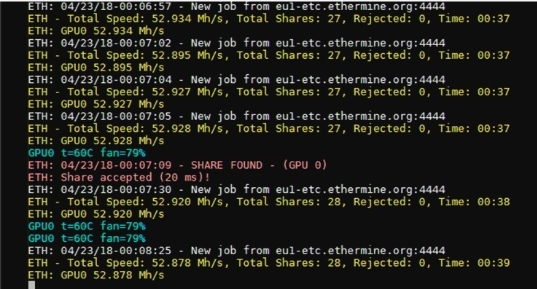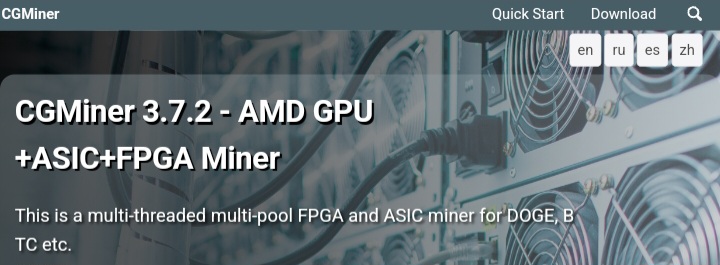How to Optimize Mining Performance: Hardware & Software Tweaks for Intermediate.

Crypto mining has evolved from a hobbyist activity to a sophisticated operation requiring strategic optimization. Every percentage point of improved efficiency translates directly to your bottom line. Whether you’re running a single ASIC or managing a mining farm, understanding how to squeeze maximum performance from your hardware and software is crucial for profitability in 2025.
The mining landscape has become increasingly competitive. Bitcoin’s network difficulty continues climbing while energy costs fluctuate wildly. Smart miners aren’t just buying better hardware—they’re optimizing every aspect of their operations. This guide reveals proven techniques to boost your mining performance through strategic hardware upgrades and software tweaks.
How to Optimize Mining Performance 101
Mining performance boils down to a simple equation: maximizing hash rate while minimizing operational costs. Your hash rate determines how many cryptographic puzzles you can solve per second. Higher hash rates mean more chances to mine blocks and earn rewards.
However, raw computational power isn’t everything. Energy efficiency plays an equally critical role in determining profitability. A miner consuming 3,000 watts to produce 100 TH/s is less profitable than one using 2,500 watts for the same output. The sweet spot lies in balancing maximum hash rate with minimal power consumption.
Temperature management forms the third pillar of mining performance. Heat is the enemy of electronic components. Excessive temperatures throttle performance, increase power consumption, and shorten hardware lifespan. Maintaining optimal operating temperatures can improve efficiency by 10-15% while extending equipment life by years.
Selecting the Right Mining Hardware
Your hardware choice fundamentally determines your mining operation’s potential. ASIC miners dominate Bitcoin mining due to their specialized architecture designed exclusively for SHA-256 calculations. Modern ASICs deliver hash rates measured in terahashes per second (TH/s) while maintaining reasonable power efficiency.
When evaluating mining hardware, focus on three key metrics:
- Hash rate per dollar: Calculate the TH/s you get for each dollar spent on hardware
- Power efficiency (J/TH): Lower joules per terahash means better energy efficiency
- Build quality and reliability: Premium manufacturers offer better cooling, components, and warranties
The latest generation ASICs from manufacturers like Bitmain, MicroBT, and Canaan offer significant efficiency improvements over older models. Upgrading from a 2021-era miner to a 2025 model can reduce power consumption by 30-40% for the same hash rate. This efficiency gain often justifies the upgrade cost within 6-12 months.
How to Optimize Mining Performance By Firstly Comparing Hardware & Software
| Hardware | Type | Hash Rate | Power Consumption | Efficiency (W/TH) | Avg. Daily Profit* | Best For | Price (USD) |
|---|---|---|---|---|---|---|---|
| Antminer S21 | ASIC | 200 TH/s | 3500W | 17.5 W/TH | ~$6.50 | Industrial Bitcoin Mining | $4,500 – $5,200 |
| WhatsMiner M60S | ASIC | 186 TH/s | 3276W | 17.6 W/TH | ~$6.10 | Large-scale Farms | $4,000 – $4,800 |
| Antminer L7 | ASIC | 9.5 GH/s (Litecoin/Doge) | 3425W | ~360 W/GH | ~$7.20 | Litecoin/Doge Mining | $6,000 – $7,000 |
| Nvidia RTX 4090 | GPU | ~132 MH/s (ETHW, ETC) | 450W | ~3.4 W/MH | ~$1.20 | Versatile GPU Mining | $1,500 – $1,800 |
| AMD RX 7900 XT | GPU | ~90 MH/s (ETHW, ETC) | 340W | ~3.7 W/MH | ~$0.85 | Mid-range GPU Mining | $800 – $950 |
| Antminer KS3 | ASIC | 9.4 TH/s (Kaspa) | 3188W | 339 W/TH | ~$9.80 | Kaspa Mining | $5,500 – $6,500 |
| Goldshell KD MAX | ASIC | 40.2 TH/s (Kadena) | 3350W | ~83 W/TH | ~$5.40 | Kadena Mining | $3,000 – $3,800 |
Consider your local electricity rates when selecting hardware. Areas with power costs above $0.10/kWh demand the most efficient miners available. Regions with cheaper electricity can profitably run slightly older, less efficient models that offer better hash rate per dollar ratios.
Hardware Optimization Techniques
Once you’ve selected appropriate hardware, optimization becomes crucial. Undervolting represents one of the most effective techniques for improving mining efficiency. By reducing voltage supplied to your ASIC chips, you decrease power consumption and heat generation while maintaining stable hash rates.
Start undervolting gradually:
- Reduce voltage by 0.05V increments: Monitor stability for 24 hours between adjustments
- Track efficiency improvements: Document power consumption and hash rate at each voltage level
- Find your hardware’s sweet spot: Most ASICs can handle 5-10% voltage reduction without performance loss
- Implement failsafes: Set up automatic voltage restoration if instability occurs
Overclocking offers another path to enhanced performance. Modern ASICs can often handle 5-15% frequency increases with proper cooling. However, overclocking increases power consumption and heat generation exponentially. The key is finding the optimal balance where increased hash rate justifies higher operational costs.
Physical modifications can also boost performance. Replacing thermal pads and paste with high-quality alternatives can reduce chip temperatures by 5-10°C. Some miners modify heatsinks or add additional cooling capacity to push their hardware harder while maintaining safe temperatures.
Mining Software Configuration
Software optimi zation often gets overlooked but can significantly impact mining performance. Choosing the right mining software and configuring it properly can improve efficiency by 3-5%.
zation often gets overlooked but can significantly impact mining performance. Choosing the right mining software and configuring it properly can improve efficiency by 3-5%.
Start with reputable mining software that supports your hardware:
- CGMiner and BFGMiner: Open-source options with extensive customization capabilities
- Awesome Miner: Comprehensive management suite for multiple miners
- Hive OS: Linux-based mining OS with remote management features
- Braiins OS+: Custom firmware offering autotuning and efficiency improvements
Configure your mining software for optimal performance by adjusting these critical settings:
Work size and intensity settings directly impact how your hardware processes mining tasks. Higher intensity increases hash rate but also power consumption and heat. Start with manufacturer recommendations and adjust based on your cooling capacity.
Connection settings affect how efficiently your miner communicates with pools. Reduce latency by selecting geographically close pool servers. Enable features like Stratum V2 for improved efficiency and security. Configure multiple backup pools to prevent downtime during pool maintenance or outages.
Power management features in modern mining software allow dynamic adjustment based on profitability. Some software can automatically reduce power consumption during peak electricity rate periods. These smart power features can improve overall profitability by 5-10% in regions with variable electricity pricing.
Advanced Cooling Solutions
Effective cooling directly translates to better mining performance. Every 10°C reduction in operating temperature can extend hardware lifespan by up to 50%. Moreover, cooler chips operate more efficiently and can sustain higher clock speeds without throttling.
Traditional air cooling remains the most cost-effective solution for small to medium operations:
- Optimize airflow patterns: Create dedicated hot and cold aisles in your mining space
- Install high-CFM exhaust fans: Remove hot air quickly to prevent recirculation
- Use filtered intake fans: Prevent dust accumulation while maintaining positive pressure
- Position miners strategically: Allow adequate spacing for airflow between units
Immersion cooling represents the cutting edge of mining thermal management. Submerging ASICs in dielectric fluid can reduce temperatures by 20-30°C compared to air cooling. This dramatic temperature reduction enables aggressive overclocking while actually improving hardware longevity.
The benefits of immersion cooling extend beyond temperature control. Immersion-cooled miners operate silently and require no air filters or regular cleaning. The initial investment is substantial, but operational savings and performance gains often justify the cost for serious mining operations.
Hybrid cooling solutions offer a middle ground. Some miners use liquid cooling blocks on ASIC chips while maintaining air cooling for other components. This approach can reduce chip temperatures by 15-20°C without the complexity of full immersion systems.
Monitoring and Maintenance Best Practices
Consistent monitoring prevents small issues from becoming expensive failures. Implement comprehensive monitoring systems that track temperature, hash rate, power consumption, and error rates in real-time.
Essential monitoring metrics include:
- Chip and board temperatures: Set alerts for temperatures exceeding safe thresholds
- Hash rate variance: Sudden drops indicate potential hardware issues
- Power consumption patterns: Unusual spikes suggest component degradation
- Network connectivity: Monitor rejection rates and pool connection stability
- Fan speeds and functionality: Failing fans cause rapid temperature increases
Regular maintenance extends hardware life and maintains optimal performance. Develop a maintenance schedule based on your operating environment. Dusty environments require monthly cleaning, while filtered facilities might need quarterly attention.
Preventive maintenance tasks should include thorough cleaning of heatsinks and fans using compressed air. Replace thermal interface materials annually or when temperatures creep upward despite cleaning. Check and tighten all power connections quarterly—loose connections cause resistance, heat, and potential fires.
Document all maintenance activities and performance metrics. This historical data helps identify degradation patterns and optimize replacement schedules. Miners showing consistent efficiency decline despite maintenance become candidates for replacement or relegation to lower-tier operations.
Maximizing Profitability Through Strategic Optimization
Successful mining in 2025 requires a holistic approach to optimization. Combine hardware selection, software configuration, cooling solutions, and maintenance practices into a cohesive strategy.
Time your optimization efforts strategically. Implement major changes during low-difficulty periods when competition is reduced. Test new configurations thoroughly before deploying across your entire operation. A 1% improvement across a large mining farm translates to significant additional revenue.
Consider market conditions when planning upgrades. Bull markets justify aggressive expansion and efficiency improvements. Bear markets demand maximum efficiency to maintain profitability at lower coin prices. Always calculate return on investment for any optimization, factoring in implementation costs and downtime.
Stay informed about emerging technologies and techniques. The mining industry evolves rapidly, with new efficiency improvements appearing regularly. Join mining communities, follow manufacturer updates, and experiment with new optimization methods on test hardware.
Conclusion
In conclusion, optimizing your mining performance requires a balanced approach that combines the right hardware choices, smart software configurations, and consistent maintenance. Moreover, by implementing proven strategies such as undervolting, proper cooling, and joining efficient mining pools, you can significantly boost your rig’s output while reducing long-term operational costs.
Additionally, you can Optimize your mining performance by staying updated with firmware releases and monitoring tools. However, if you followed our beginner mining guide course, its time to apply this strategy on how to Optimize Mining Performance and maximize your crypto mining returns in 2025 and beyond.



